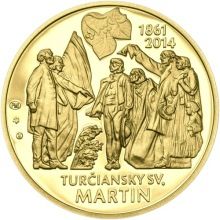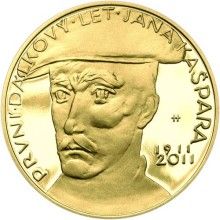Socialization of finance
HISTORY OF CZECHOSLOVAK CURRENCY.
The Košice government's program placed the monetary and credit system "under general state equipment and in the service of rebuilding the national economy." In this way, he significantly determined the direction towards the gradual socialization of the financial sector - the nationalization of banks and central directive management.
- The first step was the abolition of the Czech bank UNION, the Czech Discount Bank and German financial institutions. At the same time, branches of the Reich-German banks and credit unions at the border were abolished.
- Prague Credit Bank and Legionbanka were restored and canceled during the German occupation.
- National administrations have been introduced in large banks.
- The preparation for nationalization was the reduction of the number of banks and their merger to eight banks in the Czech lands and six banks in Slovakia.
- Nationalization Decree of the President of the Republic of 24 October 1945
- It was decided to transform large banks into national enterprises.
Preparations for a radical transformation of the banking system to the Soviet model continued. In July 1946, the National Assembly, at the suggestion of the Communist Party of Czechoslovakia, adopted a two-year economic renewal plan for the years 1947-1948, the so-called two-year plan. He aimed at socializing the economy and concentrating nationalized banks. Three banks remained in the Czech lands (Živnobanka, Legiobanka, Moravská banka) and two banks in Slovakia (Slovenská banka and Tatrabanka). They were entrusted with the provision of operating loans. The Czechoslovak Discount Institute and the Provincial Bank have so far provided investment loans.
- The first step was the abolition of the Czech bank UNION, the Czech Discount Bank and German financial institutions. At the same time, branches of the Reich-German banks and credit unions at the border were abolished.
- Prague Credit Bank and Legionbanka were restored and canceled during the German occupation.
- National administrations have been introduced in large banks.
- The preparation for nationalization was the reduction of the number of banks and their merger to eight banks in the Czech lands and six banks in Slovakia.
- Nationalization Decree of the President of the Republic of 24 October 1945
- It was decided to transform large banks into national enterprises.
Preparations for a radical transformation of the banking system to the Soviet model continued. In July 1946, the National Assembly, at the suggestion of the Communist Party of Czechoslovakia, adopted a two-year economic renewal plan for the years 1947-1948, the so-called two-year plan. He aimed at socializing the economy and concentrating nationalized banks. Three banks remained in the Czech lands (Živnobanka, Legiobanka, Moravská banka) and two banks in Slovakia (Slovenská banka and Tatrabanka). They were entrusted with the provision of operating loans. The Czechoslovak Discount Institute and the Provincial Bank have so far provided investment loans.
CONTENT
- Origin of the Czechoslovak currency.
- Monetary stabilization.
- Establishment of the central bank.
- National Bank of Czechoslovakia.
- Gold reserve.
- Economic boom.
- Depression.
- The main activities of banks.
- Development of the national economy.
- Art designs.
- Czech banking system.
- The disintegration of Czechoslovakia.
- German occupation of the Czech lands.
- Currency damage caused by the occupation.
- Preparation of post-war monetary policy.
- Inflation and monetary chaos.
- Organization of monetary relations.
- Socialization of finance.
- February 1948 and central management.
- Directive management of monetary relations.
- Monetary reform of 1953.
- Central plan.
- Isolation.
- Reform efforts.
- "Standardization".
- Economic problems.
- Economic transformation.
- Changes in monetary policy management.
- Development of the koruna exchange rate.
- Development of the banking system.
- Development in 1990-1992.
- Division of the Czechoslovak Socialist Republic.
- Origin of the Czech koruna.
- Monetary policy management.
- International cooperation.
- Monetary stabilization.
- Establishment of the central bank.
- National Bank of Czechoslovakia.
- Gold reserve.
- Economic boom.
- Depression.
- The main activities of banks.
- Development of the national economy.
- Art designs.
- Czech banking system.
- The disintegration of Czechoslovakia.
- German occupation of the Czech lands.
- Currency damage caused by the occupation.
- Preparation of post-war monetary policy.
- Inflation and monetary chaos.
- Organization of monetary relations.
- Socialization of finance.
- February 1948 and central management.
- Directive management of monetary relations.
- Monetary reform of 1953.
- Central plan.
- Isolation.
- Reform efforts.
- "Standardization".
- Economic problems.
- Economic transformation.
- Changes in monetary policy management.
- Development of the koruna exchange rate.
- Development of the banking system.
- Development in 1990-1992.
- Division of the Czechoslovak Socialist Republic.
- Origin of the Czech koruna.
- Monetary policy management.
- International cooperation.
JÁ  ZLATÉ MEDAILE.CZ
ZLATÉ MEDAILE.CZ



